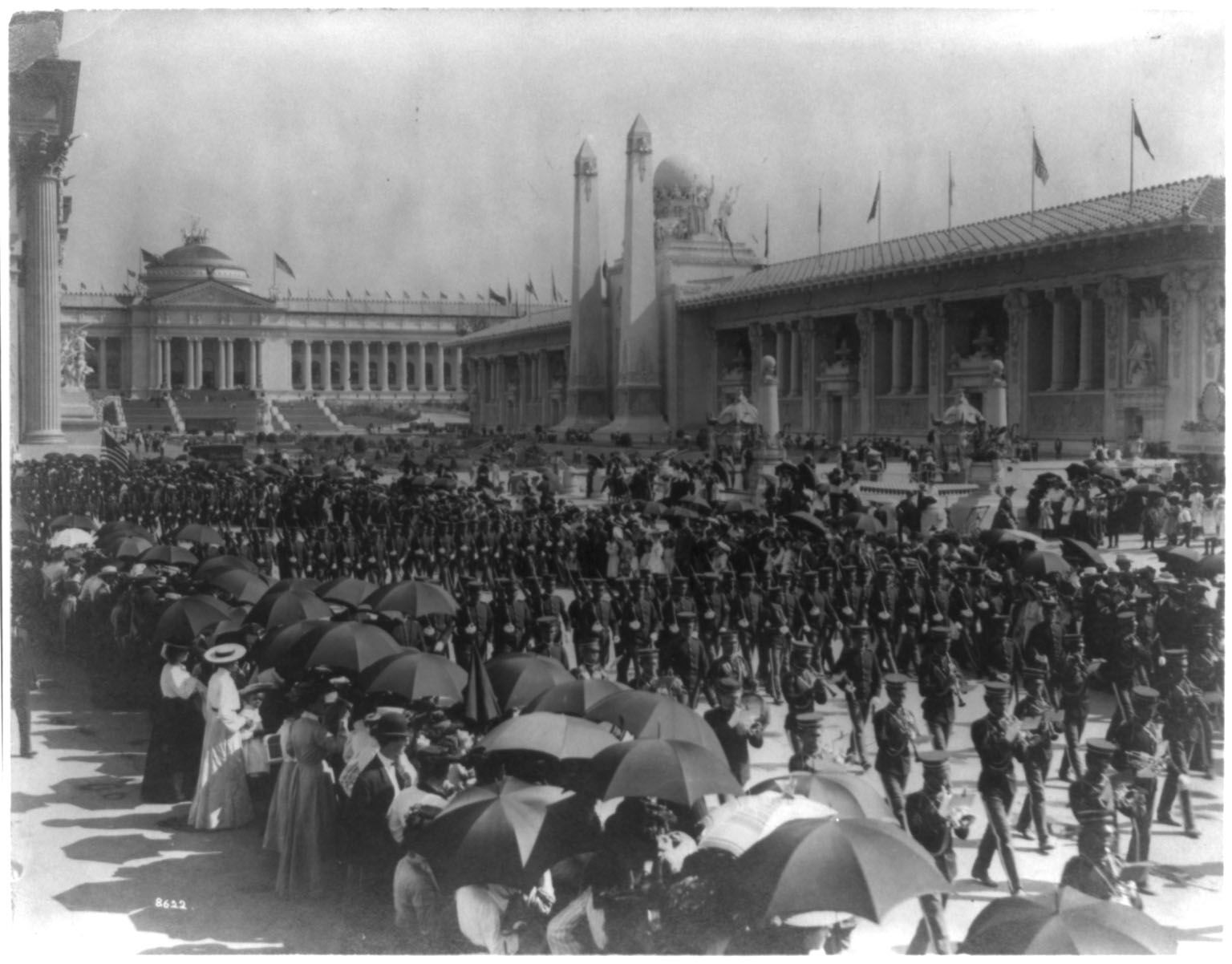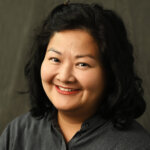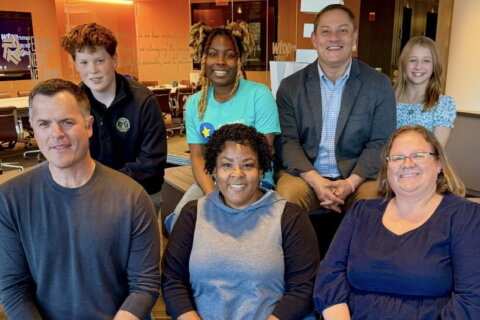More than 100 years ago in St. Louis, the Louisiana Purchase Exposition introduced the X-ray, the car, the airplane and even an early version of a cellphone. It also featured what scholars have called a human zoo.
People from around the world were brought in as paid performers to make crafts and textiles, and to participate in sporting events and even military formations. But the biggest and most popular exhibit was the Philippine reservation.

Spain had ceded the Philippines to the U.S. six years earlier, and Filipinos were considered U.S. nationals. It was a precarious time legally, and left them in a vulnerable position, said Theodore Gonzalves, a curator at the Smithsonian National Museum of American History in D.C.
“It’s kind of a limbo, where they’re neither aliens nor citizens,” Gonzalves said
Several articles written during the fair called the Filipinos on display “savages” and focused on their feasting habits or their scant clothing. But other accounts noted how the exhibit also included Filipino scouts, who became members of the U.S. Army. The idea was to show that Filipinos embodied the continuum of “savagery to civilization,” Gonzalves said.
“The idea here (was) to use that range of representation to help justify to the Americans why the United States needed to be in the Philippines; there was a reason why young American soldiers were sent to fight in that war, some of whom didn’t come back,” he said.
One article in the Newark Journal in 1904 described the Philippine exhibition as a “place of contrasts” that displayed the “patriotism, culture and skill of the best representatives” and the “depravity, superstition and ignorance of the savage tribes.” It went on to say that fairgoers learned that there was “no standard type in the Philippines,” and the people being displayed “dissipate the idea that the Philippines are populated by a homogeneous people.”
St. Louis artist Janna Langholz, who has been conducting research at the Philippine Village Historical Site, told St. Louis Public Radio that the fair was “one of the most racist and tragic events in American history, especially for Filipinos and people of color.”
“When you do not grant the fullness of a person’s humanity to them, you end up relying on stereotypes. You end up relying on partial vision of what this person could be,” Gonzalves said.
Scholars say partial visions have helped lead to the “model minority” myth in American culture today.
The ‘model minority’ myth
The phrase “model minority” began to be used in the 1960s amid the heat of civil rights and policy debates around affirmative action, said Julie Park, the director of the University of Maryland’s Asian American Studies program. The U.S. was arguing over how to create equal opportunity or level the playing field for African Americans after centuries of slavery and historical racism.
“And it was in this context, where the journalists started to write articles about, ‘Well, you know, the Japanese Americans faced quite a bit of hardship. They were interned, yet they ended up doing just great. And … they should be (the) model, right?'” Park said.
- Beyond Chinatown: Researching Asian American and Pacific Islander spaces in DC
- How Chinese is Chinatown? The importance, and difficulty, of keeping historical connection
- Balikbayan boxes: How Spam, toothpaste, even toilet paper can say ‘I’m thinking about you’
A 1966 article in U.S. News & World Report emphasized the success of Chinese Americans despite the hurdles they faced, and how they overcame those obstacles “with no help from anyone else.”
“Visit ‘Chinatown U.S.A.’ and you find an important racial minority pulling itself up from hardship and discrimination to become a model of self-respect and achievement in today’s America,” the article said.
This portrayal was in juxtaposition against African Americans, who were painted as the “problem minority,” Park said, a tactic she described as “extremely detrimental; it causes a racial wedge in a way that is extremely harmful.”
The 1966 article was “part of an attempt to use Asian Americans as a foil,” to be compared with African Americans and Latin Americans to suggest that the social problems being experienced by those communities were due to their family and cultural values, said Patricia Chu, a professor of English and director of the Asian American Studies minor at The George Washington University.
In other words, it implied that the problem for African Americans wasn’t the system, but something inherent in their culture, Park added.
“It placed Asian Americans into a position that they didn’t necessarily want to be in, of being the group that was used to argue against political demands of other groups,” Chu said. “Because the arguments were that Chinese and Japanese Americans can succeed in entering the middle class, then there must not be structural inequalities that need public remedy.”
The relationship between the two communities has been portrayed as in conflict for years, but Brookings researchers say the “trope of the Black-Asian conflict” not only ignores the role of “white national populism, but it also absolves the history and systems of inequality that positioned them there.”
“It’s not good for intra-ethnic alliances and solidarity,” Chu said.
Ignoring needs
Classifying Asian Americans as the model minority can also be a barrier in getting resources to them and, oftentimes, needs go unmet, Park said.
“They’re like, ‘Well, of course, you don’t need any help,'” Park said. “‘You’re part of the model minority. You can figure it out … Aren’t you all educated and wealthy?’ And that’s just simply not true.”
Asian Americans are often assumed to be law-abiding people and good workers, good at school and good at science, technology, engineering and mathematics, Chu said. The assumption is a byproduct of a policy change: When the exclusion laws that limited Asian immigration were lifted in 1965, those selected or favored to come to the U.S. were those with greater job qualifications, thus giving rise to the perception that Asians are better at school.
But others who came to the U.S. later, including Vietnamese, Cambodian or Laotian refugees who lost everything due to war, had to start from scratch, including learning the language.
The model minority stereotype, Chu said, obstructs the fact that some people don’t come in with the same privileges, and may need help and public assistance. Moreover, it blinds people to the diversity of Asian Americans, not just in terms of culture but in earning power and resources, she added.
The assumed educational achievements of Asian Americans can also underplay Asian American accomplishment: “Well of course you would have accomplished these things. Of course this is your GPA and SAT. You’re supposed to — you’re Asian American, right?” Park said is a common expectation.
Chu added that anyone who doesn’t live up to the public or community expectation may feel stigmatized.
The model minority is also expected to be a model worker, which can leave an Asian American out when being considered for a leadership role, Chu said. Asian Americans are supposed to be “more cooperative and respectful,” Chu added, and so while women of all races are looked down on for expressing anger, criticism or dissent at work, it’s worse for Asian American women.
Being a model citizen does not necessarily mean that you’re encouraged to have the full range of human personality, Chu said.
Media images circulated of Filipinos at the time of the St. Louis Fair, including political cartoons and photographs handed out as souvenirs for fairgoers, did not present a full picture of their humanity, Gonzalves said.
One of the Smithsonian National Museum of American History’s aims is to understand how people struggle to be seen as fully human.
“When we are not able to insist on the fullness of our humanity, not only for ourselves, but for our neighbors, for the people who come into our midst, either as refugees or as people from defeated nations from other wars — if we see them as something less than human, then all sorts of other ideas can flow into our heads about how we can present them, how we can treat them, how we can choose not to care for them,” Gonzalves said.








